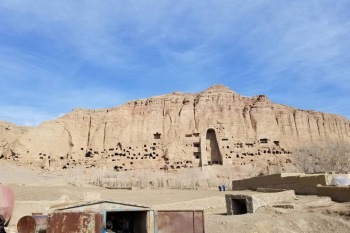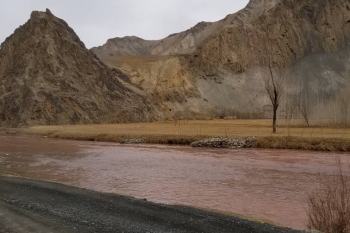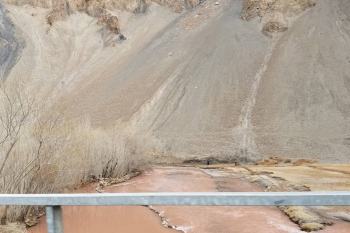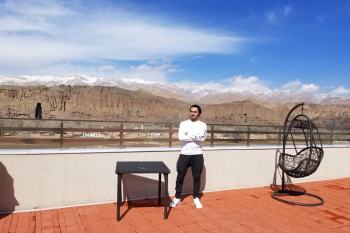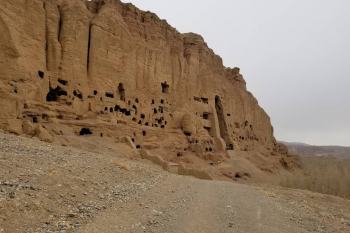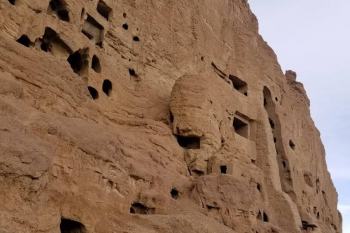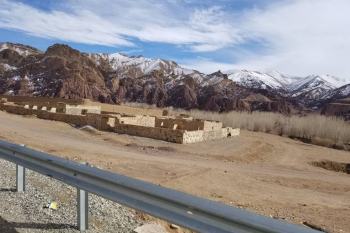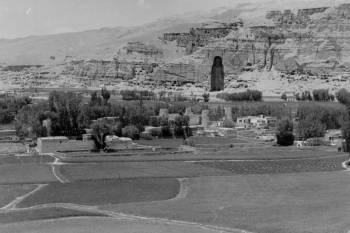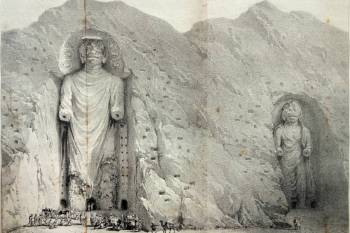
Bamiyan Buddhas, Afghanistan
To the Northeast of the royal city there is a mountain, on the declivity of which is placed a stone figure of the Buddha, erect, in height 140 – 150 feet. Its golden hues sparkle on every side, and its precious ornaments dazzle the eyes by their brightness.
“The Bamiyan Buddhas have several qualities that make them inspiring. Located on an axis of perpetual contention, they nonetheless survived for 15 centuries. Representing an earlier age, they won the enduring affection of the population, which wants them back. Unlike some monuments, which represent military victories or a long-gone ruler, these more philosophical monuments seek to represent the universal and unifying values of light, kindness, wisdom and reflection.”
The Bamiyan Project was ARCH International’s first major initiative. We believe Bamiyan valley is a vital region holding a great potential for the future. We would like to see both Buddhas rebuilt.We believe in dialogue and in listening to the people who feel a personal bond to the Buddhas: the locals, the expats, the students, who have traveled to Bamiyan valley in the 60s and many more. We believe that only because things have been done a certain way for decades does not mean it is the way to go forward. Through research and through finding partners we are looking at the issue of reconstructing the Buddhas from all angles.
We are dedicated and committed to the Bamiyan Project and that has paid off. Afghanistan’s president Ashraf Ghani asked ARCH International in January 2016 to prepare a report for him regarding the different available options for Bamiyan. Following that report, ARCH was invited to attend the UNESCO meeting “Cultural Heritage and Development Initiatives” in Rome, May 25-27, 2016. The next step will be the publication of a joint study between CACI, Johns Hopkins University and ARCH. We will keep you posted!

About
You will hardly encounter anyone who does not know the Bamiyan Buddhas, who does not flinch at the memory of their wanton destruction by the Taliban. For us, this was the “enough is enough” moment that gave birth to ARCH. What inspired us most was the fact that the Afghans themselves, and

Problem
By all indications, the Afghan people want their statues back, for many reasons: because they loved them and they miss them; because the Taliban should not have the last word; because tourists would come to see them, bringing much-needed jobs and money.

Location
The Bamiyan Buddhas stood in the Hazarajat region of Afghanistan at an altitude of 2,500 meters.

Solution
This is not a project for today or tomorrow, while conflict is still ongoing in Afghanistan and scarce resources are needed for survival. What we can do and are doing is to prepare the way – gathering facts, determining options and possibilities.
How You Can Help
The destruction of the Bamiyan Buddhas was the catalytic event that inspired the original founding of our organization. We were deeply moved by the affection felt by ordinary Afghans for this unique piece of their history, and by their distress over losing it. We have never stopped monitoring the discussion and activities surrounding Bamiyan and its future. We would love to establish an expert circle, including different stakeholders, to further research the issue of restoring the Buddhas. ARCH is also looking into hosting events to raise awareness about the site. Tell us what your interests and skills are – get involved!
Background & more Information
Immediately after the overthrow of the Taliban, the country’s newly installed government announced intentions to rebuild “within two years.” Former President Hamid Karzai traveled to the site for this declaration, and was received by a large crowd all endorsing his announcement. That optimistic timeline proved impossible, but evidence suggests that this outcome remains the dominant wish of the majority of Afghans.
UNESCO, the international organization charged with overseeing policy on world heritage matters, has taken a – quite literally – more “conservative” view. They provided funding (through member governments, most notably Japan and Germany) to stabilize the cavernous niches that formerly housed the statues, and to conserve the remaining fragments of the monuments.
Regarding what should be done, opinions within the expert community and the general public diverge widely. At one end of the spectrum we find a belief that reconstruction of monuments in general is inauthentic and should not occur, and that in this case in particular, the vacant niches represent a powerful statement just as they are. At the other end of the spectrum are those who believe that the Buddhas should be rebuilt as soon and as completely as possible.
But even between these polar positions there is much room for debate.
- If the niches are to remain empty as a warning against barbarism and destruction, should there be a visitor center with images and displays to document their past glory?
- If they are to be rebuilt, what point in their long history should provide the orientation?
- Should they be restored to their appearance just before they were demolished, when portions were already missing?
- Should an attempt be made to discover what they looked like when they were first built, and should they be restored to that condition?
- Who should make the decision about the fate of the Buddhas – the Afghan population, perhaps through a referendum, the Afghan government, a consortium of interested parties and nations, or UNESCO and its international experts?
- When should this happen – now, to stimulate tourism and help the Afghan economy when it most needs a boost, or later, when the country’s situation has hopefully settled down?
Our main intention is to provide an objective forum for the exchange of information and viewpoints on this important matter. We are endeavoring to provide you here with the most current information on where things stand on all matters Bamiyan – what the experts are saying, what new discoveries have been made, what solutions are under debate. And we want to hear from you.
If you have visited, please share your impressions and your photos. If you have attended an expert conference, written a paper, or led a working group on the Bamiyan Buddhas, we will be glad to post your information. If you would like to weigh in with your own thoughts, please contribute them to what we expect will be a lively, ongoing debate that hopefully will culminate in a constructive outcome for beautiful Bamiyan in the not too distant future.
Contact us at info@archinternational.org.
Interesting facts about the Bamiyan Buddhas:
- Only the flat outline of the Buddhas was carved out of stone.
- The details – the folds of the robe, the actual shape of the body – were added in layers of clay, a mix of mud and straw similar to the adobe used for building houses in the American Southwest. Each layer had a slightly different composition, for which the “recipe” still exists in books and studies about the Buddhas that pre-date their destruction.
- The face may have been covered with a mask, but this was lost or robbed long ago. Early texts also refer to the Buddhas being covered with jewels and precious stones.
- There may have been a gated wooden edifice surrounding the Buddha, and wooden cliff dwellings may have been attached to the rock.
- The larger Buddha’s arm is thought to have been made out of wood and attached to a pulley, allowing it to be raised in “blessing.”
- The elaborate folds on the Buddhas’ garments reflect Hellenistic influences.
- Completion of the massive statues probably took several decades.
- Initially they were part of a large urban complex, and the entire valley was a “gallery” filled with paintings, statues and other treasures.
- Genghis Khan wrought massive destruction on Bamiyan in revenge for the death of his favorite grandson, who was killed here during a battle.
- Mullah Omar initially declared the Buddhas a national treasure and said they posed no threat, since there were no Buddhists left in Afghanistan who might worship them as “idols.” Later, under pressure from Al Qaeda, he changed his views.
- The Grand Mufti of Egypt was among the many international dignitaries who traveled to Taliban Afghanistan to plead for the sparing of the Buddhas – pleas echoed by Kofi Annan and many foreign governments.


